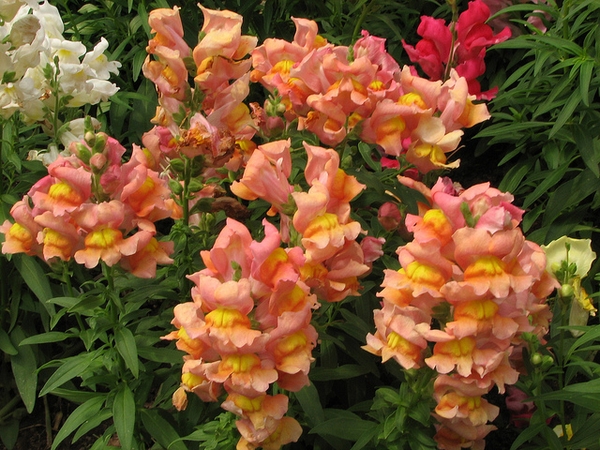November Plant Spotlight – Snapdragons
go.ncsu.edu/readext?1101194
en Español / em Português
El inglés es el idioma de control de esta página. En la medida en que haya algún conflicto entre la traducción al inglés y la traducción, el inglés prevalece.
Al hacer clic en el enlace de traducción se activa un servicio de traducción gratuito para convertir la página al español. Al igual que con cualquier traducción por Internet, la conversión no es sensible al contexto y puede que no traduzca el texto en su significado original. NC State Extension no garantiza la exactitud del texto traducido. Por favor, tenga en cuenta que algunas aplicaciones y/o servicios pueden no funcionar como se espera cuando se traducen.
Português
Inglês é o idioma de controle desta página. Na medida que haja algum conflito entre o texto original em Inglês e a tradução, o Inglês prevalece.
Ao clicar no link de tradução, um serviço gratuito de tradução será ativado para converter a página para o Português. Como em qualquer tradução pela internet, a conversão não é sensivel ao contexto e pode não ocorrer a tradução para o significado orginal. O serviço de Extensão da Carolina do Norte (NC State Extension) não garante a exatidão do texto traduzido. Por favor, observe que algumas funções ou serviços podem não funcionar como esperado após a tradução.
English
English is the controlling language of this page. To the extent there is any conflict between the English text and the translation, English controls.
Clicking on the translation link activates a free translation service to convert the page to Spanish. As with any Internet translation, the conversion is not context-sensitive and may not translate the text to its original meaning. NC State Extension does not guarantee the accuracy of the translated text. Please note that some applications and/or services may not function as expected when translated.
Collapse ▲November’s plant spotlight is Snapdragons (Antirrhinum majus). Snapdragons are a garden favorite that loves cooler autumn temperatures. Snapdragons get their name from the interesting flowers that open like a dragon’s mouth when squeezed on the sides. With flowers coming in a wide range of colors including shades of pink, red, orange, yellow, white, along with colorful bicolors – they bring vibrant color to the landscape during the cool seasons.
Snapdragons can reach a height of 2 to 3 feet with their unique shaped flowers arranged along a center stem. This vertical growth makes them stand out in garden beds and containers.

Snapdragons (Antirrhinum majus) are a garden favorite that loves cooler autumn temperatures. Photo Credit: lezumbalaberenjena CC BY-NC-ND 2.0
For beautiful fall color, plant snapdragons in the late summer or early fall. If we have a mild winter, they may even bloom into early winter before taking a break during the coldest days of winter. As temperatures warm in the spring, they can begin to bloom again. However, since the first blooms are usually the brightest and most vigorous, gardeners often treat them as annuals by replanting each season.
Snapdragons are low maintenance, but thrive in rich, well-drained soils with full to part sun. They will need regular watering during dry spells and can benefit from removing old flowers to encourage reblooming.
Pairing well with cool-season favorites like pansies and ornamental kale, Snapdragons are the perfect way to prevent your garden’s color from fading as cooler temperatures arrive.
Jessica Strickland is an Agriculture Extension Agent, specializing in horticulture for North Carolina Cooperative Extension in Wayne County.
Learn More!
- Sign up for the Wayne County Extension Gardening email list to receive timely gardening tips.
- Follow us on Facebook and Instagram.
- Visit the North Carolina Extension Gardener Plant Toolbox to discover more plant ideas for your garden.




